| |
TMC125 safety and tolerability in treatment-experienced hepatitis B or C coinfected patients in DUET-1 and DUET-2
|
| |
| |
Reported by Jules Levin
T Campbell,1 A Mills,2 P Morlat,3 M Schechter,4 G De Smedt,5 M Peeters,5 F Tomaka,6 B Woodfall5
1University of Colorado Health Sciences Center, Denver, USA; 2Private Practice, Los Angeles, USA; 3Saint Andre Hospital, University Victor Segalen, Bordeaux, France; 4Universidade
Federal do Rio de Janeiro, Brazil; 5Tibotec BVBA, Mechelen, Belgium; 6Tibotec Inc, Yardley, USA
Presented at HEP DART: Frontiers in Drug Development for Antiretroviral Therapies, Hawaii, USA, December 9-13 2007.
Abstract
Background: DUET-1 and DUET-2 are ongoing, randomized, double-blind, placebo-controlled trials of identical design which investigate TMC125 (etravirine; ETR) in treatment-experienced, HIV-1-infected patients. We report safety results by baseline hepatitis coinfection status from a planned 24-week pooled analysis.
Methods: Patients with documented (historical data and/or viral genotype) NNRTI resistance and with >/=3 primary protease inhibitor (PI) mutations on stable virologically failing treatment were randomized to TMC125 200mg or placebo bid, each administered with darunavir/ritonavir, optimized NRTIs +/- enfuvirtide. To be eligible, patients coinfected with chronic hepatitis B or C (HBV/HCV) had to be clinically stable with aspartate aminotransferase/alanine aminotransferase (AST/ALT) <5x upper limit of normal. Coinfection status was determined by positive HbsAg or positive HCV RNA. Adverse events (AEs) and laboratory parameters were analyzed based on baseline hepatitis coinfection status.
Results:
Among 1130 patients included in the analysis, 140 (12.4%) were coinfected with hepatitis B and/or C; there were no differences in coinfection status between treatment groups.
With the exception of rash, the overall incidence of AEs was generally similar between treatment groups, irrespective of coinfection status.
Most AEs were mild-to-moderate in severity. The incidence of grade 3/4 hepatic AEs, serious hepatic AEs and hepatic AEs leading to discontinuation among coinfected patients was comparable between the treatment groups.
In both treatment groups, grade 3/4 AST/ALT elevations were more frequent in those who were coinfected; differences between TMC125 and placebo were
small.
Conclusions: Consistent with the underlying chronic hepatitis coinfection, hepatic AEs and elevated hepatic parameters were more frequent in coinfected patients compared with noncoinfected patients. The incidence and severity of hepatic AEs with TMC125 were generally similar to placebo, irrespective of hepatitis coinfection status. TMC125 does not appear to increase hepatic toxicity in patients with hepatitis coinfection.
Note: abstract has been modified.
AUTHOR CONCLUSIONS
· Irrespective of coinfection status, the safety and tolerability of TMC125 was generally comparable to placebo.
· Consistent with the underlying chronic hepatitis coinfection, in both treatment groups, hepatic AEs and elevated hepatic parameters were more frequent in HIV patients coinfected with hepatitis compared to those HIV patients not coinfected with hepatitis.
· In both treatment groups, grade 3 and 4 AST/ALT elevations were more frequent in HIV-1/hepatitis coinfected patients, but there were no significant differences between TMC125 and placebo.
· The incidence of grade 3 and 4 hepatic AEs was similar between treatment groups, regardless of coinfection status
- Discontinuations due to hepatic AEs were infrequent and comparable between the placebo and TMC125 groups.
· TMC125 was not associated with hepatic toxicity in hepatitis B/C HIV-1 coinfected patients and provides a well-tolerated new option for treatment-experienced patients.
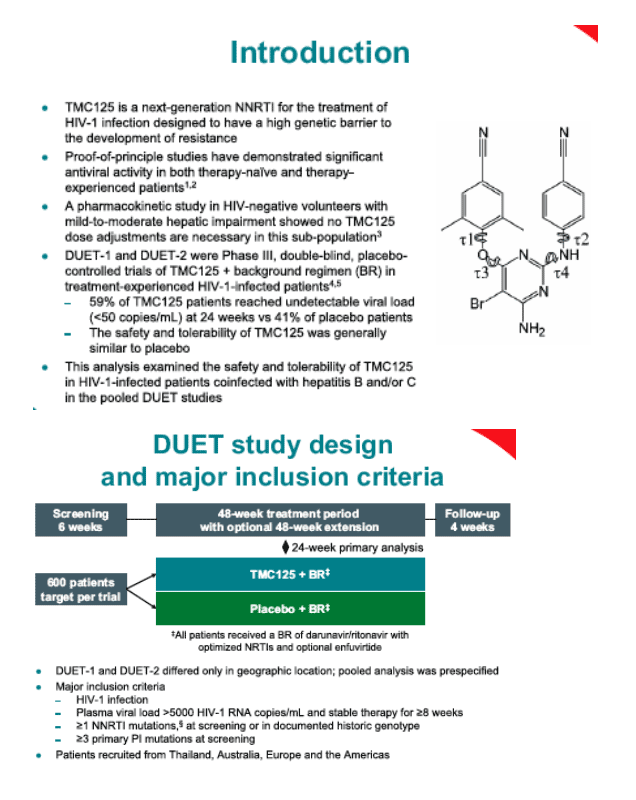
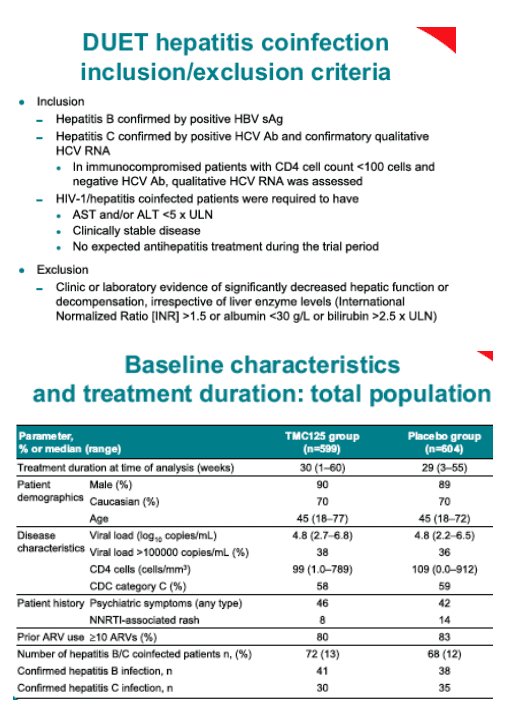
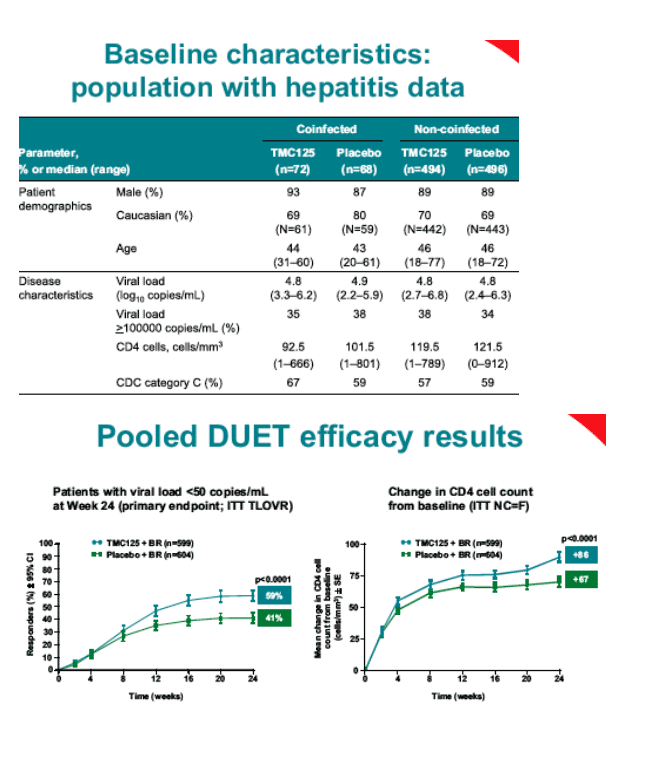
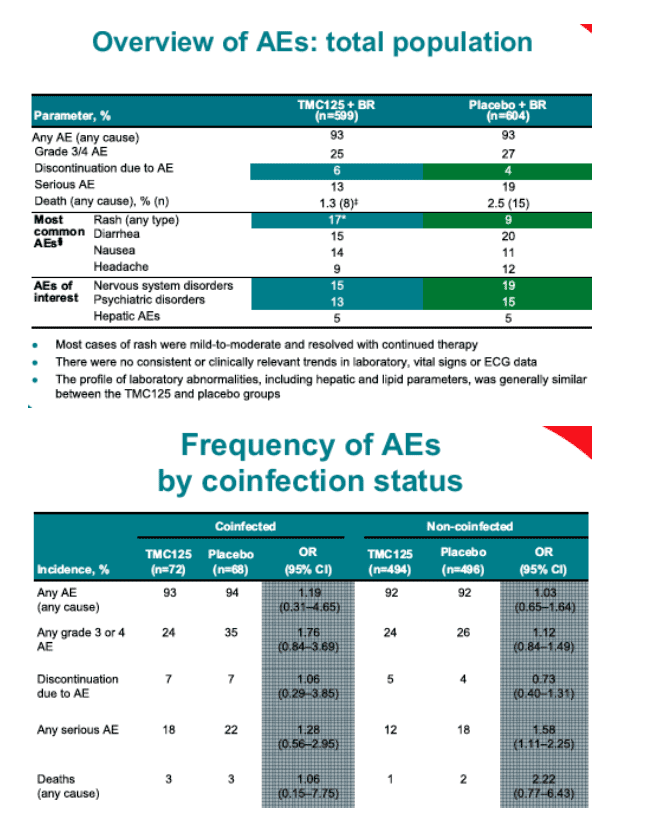

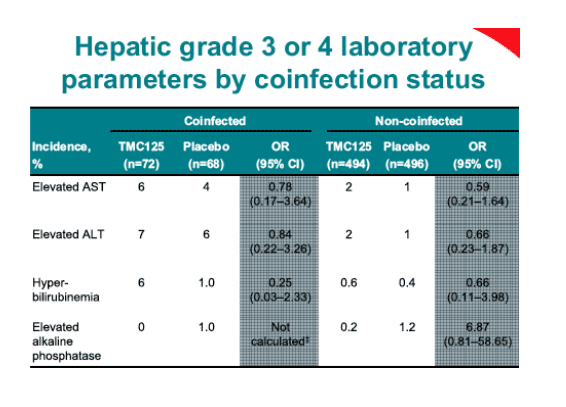
|
|
| |
| |
|
|
|